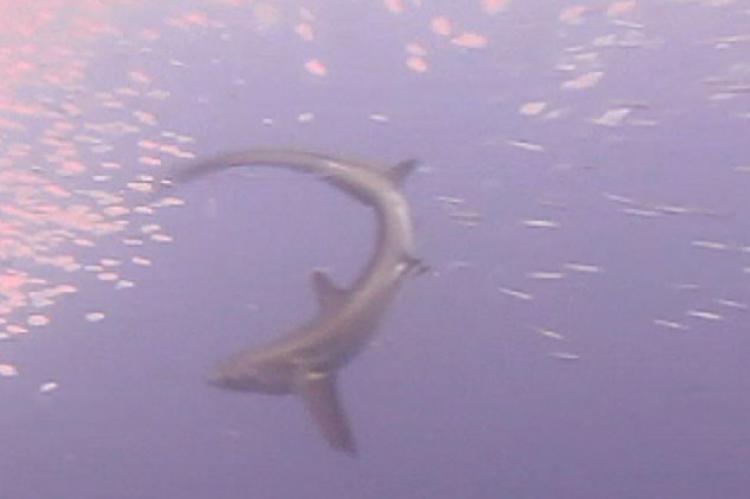Thresher sharks use their tail to stun and kill
New observations provide first clear evidence that thresher sharks really do hunt with their tails
Dr Simon Oliver, founder of the Thresher Shark Research and Conservation Project and a researcher based at University of Liverpool, filmed pelagic thresher sharks as they hunted off Pescador Island in the Philippines.
The vast sardine shoals there are feeding hot spots for these sharks, and the researchers encountered and filmed more than 60 occasions where sharks employed tail-slaps to debilitate sardines.
Thresher sharks were able to consume more than one sardine at a time, suggesting that tail-slapping is an effective foraging strategy for hunting schooling prey.
"The interesting thing about it was that these tail slaps were only successful about 60% of the time but when they were successful they managed to kill more than one prey item," said Dr Oliver.
Whiplash effect
As part of their study, the researchers analysed their footage, breaking down each attack into stages in order to record the animals' exact movements.
They noted that the sharks accelerated through the water and then "stalled themselves" by pulling their pectoral fins together. They then thrashed out by dipping their nose and swiftly bringing their tail upwards and over their heads.
The speed and movement of the strikes might create shock waves in the water. The tail-slaps occurred with such force that they may have caused dissolved gas to diffuse out of the water column forming bubbles. The fastest tail-slap, which had a mean speed of 21.82 m pr second, (78.55 kph / 48.81 mph) resulted in prey capture and the formation of a plume of bubbles.


